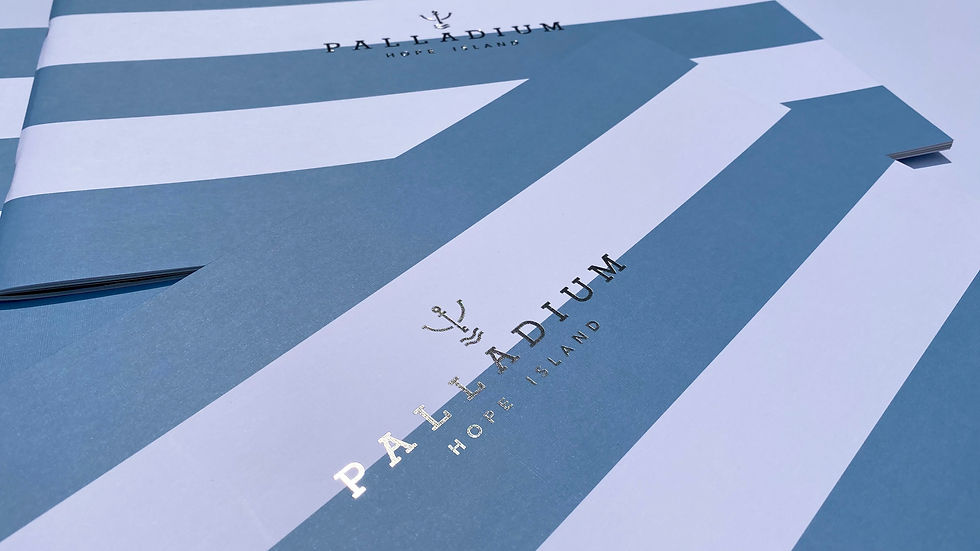What's the best paper stock for your print project? | 5 tips to help you choose.
- leighg00
- May 19, 2020
- 3 min read
Paper is just paper right, white and smooth? Not exactly. Just like a professional chef we take the ‘ingredients’ of printing very seriously, an paper is a key consideration with a big end result impact.
1. GLOSS.
No prizes for guessing this one – it’s a glossy finish. Why is it glossy? Because the paper manufacturers take your average piece of photocopy paper and add a clay surface to both sides. Then they polish it. the amount of polish and clay determines how glossy the finish will be. Ink also has a gloss to it, so glossy ink sitting on top of glossy paper will give you a … tadah, glossy finish. Gloss is probably the most economical paper type you can buy (contrary to perception). The down sides are it also creates a gloss reflection which isn’t always ideal for reading text heavy publications, and it can sometimes be a tad difficult to write on (if this is an important criteria).
2. SATIN.
This is the less polished version of the above. Satin is still economical to buy and holds the ink well, but with less overall gloss. Satin is probably our most popular paper for yearbooks or reports. Images look crisp, bright and gloss (ink gloss) but it’s easier to read text. It also gives a nice contrast between the gloss of the solid blocks of ink, and the duller paper. Although satin paper costs the same to buy as gloss, many printers insist on running a varnish on the paper (at an additional cost) as it does have a tendency to mark and scuff – especially on large patches of dark colour. We sit on the fence here. We varnish jobs with tight turn arounds (to hasten the drying process) or lots of ink, but we also print plenty of high end magazines on a satin paper without a varnish. It’s best to discuss this with your printer and designer based on your artwork and delivery expectations.
3. UNCOATED.
This is the raw paper, kind of like a sheet of photocopy paper. It’s more tactile, earthy and bulk, and it gives the perception of being recycled and more eco friendly. Not all uncoated paper is recycled, in fact most aren’t! Because there’s no clay surface on this paper it does tend to absorb more ink. This means images aren’t as sharp or contrasting, and definitely not glossy. Uncoated paper gives a beautiful finish, but it’s really best to look at your images and artwork in consultation with your printer to see if it’s the right choice. Uncoated paper is generally a little more expensive than its gloss or satin cousins, BUT because it’s bulkier you can get away with using a lower paper weight. So a 100gsm uncoated might feel the same thickness (bulk) as a 130gsm gloss.

4. SPECIALITY
This is when we start adding a few more zeros on to your print quote. Speciality paper is all the textures, waves, flecks and watermarks that generate the oohs and ahhs of printing. Because of the cost they are generally used sparingly as a cover or feature and the paper is often the ‘hero’ of the piece.
5. DOES THE PAPER CHANGE THE DESIGN?
A chicken and egg scenario, depending on what is the most important. If you already have the design, then choose the best paper to suit the use, images, binding and shelf life of the document. If you’re in love with a particular type of paper, then make sure the design lends itself to the finished print, especially if it’s and uncoated or speciality paper.
WHO CAN RECOMMEND THE BEST PAPER?
We can. That’s what we’re here for. Often your designer will have an input, but depending on their experience with printing they may not be as experienced as a printer or paper supplier. Printers will be able to show you a thousand jobs on different paper types, colours and weights. This will help you make the right decision for your situation.
Printcraft is Queensland’s largest privately owned printing company. We specialise in the design, print, mail and logistics. For more information on on our services, or to request a quote or contact us.





留言